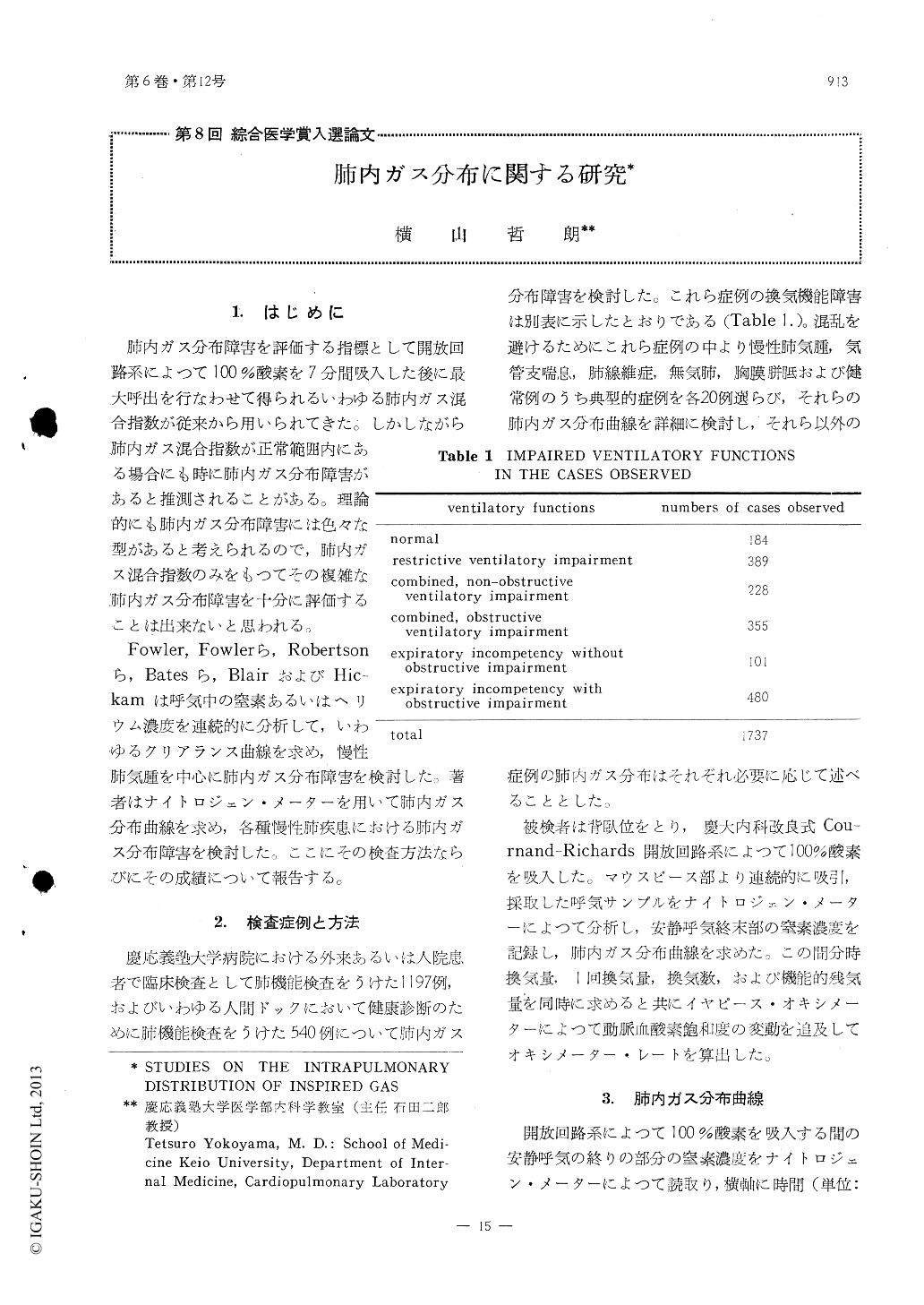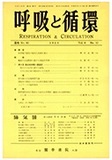Japanese
English
- 有料閲覧
- Abstract 文献概要
- 1ページ目 Look Inside
1.はじめに
肺内ガス分布障害を評価する指標として開放回路系によつて100%酸素を7分間吸入した後に最大呼出を行なわせて得られるいわゆる肺内ガス混合指数が従来から用いられてきた。しかしながら肺内ガス混合指数が正常範囲内にある場合にも時に肺内ガス分布障害があると推測されることがある。理論的にも肺内ガス分布障害には色々な型があると考えられるので,肺内ガス混合指数のみをもつてその複雑な肺内ガス分布障害を十分に評価することは出来ないと思われる。
Fowler,Fowlerら,Robertsonら,Batesら,BlairおよびHic—kamは呼気中の窒素あるいはヘリウム濃度を連続的に分析して,いわゆるクリアランス曲線を求め,慢性肺気腫を中心に肺内ガス分布障害を検討した。著者はナイトロジェン・メーターを用いて肺内ガス分布曲線を求め,各種慢性肺疾患における肺内ガス分布障害を検討した。ここにその検査方法ならびにその成績について報告する。
1. The gas distribution curve is presented to discuss the intrapulmonary distribution of inspired gas in various pulmonary disorders. Distribution index (observed) and distribution index (calculated), distribution time, terminal N2 concentration, index of intrapulmonary gas mixing, and △N2 are introduced to evaluate the referring gas distribution curve.
2. The impaired intrapulmonary distribution of inspired gas in various pulmonary diseases, such as chronic pulmonary emphysema, bronchial asthma, pulmonary fibrosis, bronchiectasis, atelectasis, and pleural scar, is discussed.
3. The effect of impaired ventilatory functions on the intrapulmonary distribution of inspired gas is discussed.
4. The relationship between gas distribution curve and oximeter rate is discussed to evaluate the alveolar functions.

Copyright © 1958, Igaku-Shoin Ltd. All rights reserved.


